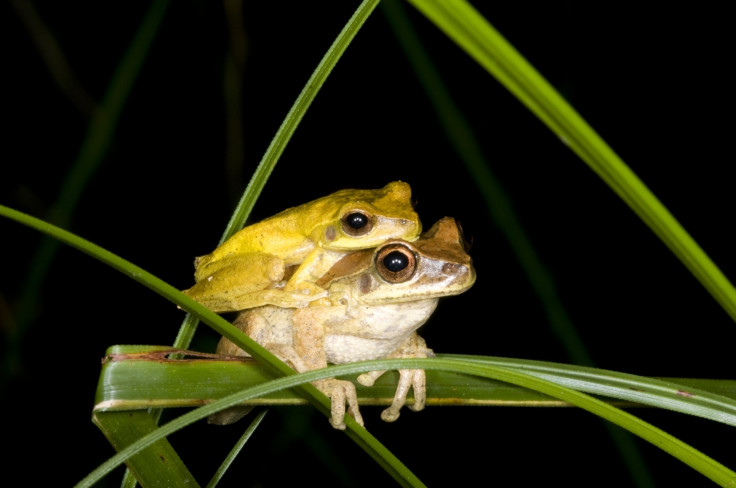Males from hundreds of frog species change colour to attract the opposite sex
Having the most vibrant distinctive colouring enhances their chances of reproductive success.

Hundreds of frog species change the look of their skin for the mating season, flaunting bright, vibrant colours for just a few, days, hours or weeks every year to impress prospective partners.
While many frogs are colourful by nature, the males of the species that change their skin spend most of the year in rather drab colours – like brown or dark green, which are effective camouflage – until it is time to find a mate.
These species were identified in a study published in the Journal of Evolutionary Biology.
Scientists were aware of the phenomenon in a handful of species, but the role of colour in frog communication has generally been neglected, with research focusing on vocal communication between the animals instead.
In addition, because the colours don't last long, the phenomenon has proven very hard to study, meaning no one was quite sure how many species have males who change their colour. Now it is clear that the behaviour is far more widespread than previously thought.
"It's not just a few species — it's a lot of frogs all over the world," said Rayna Bell, a zoologist who examined thousands of types of frog for the study.
For the study, Bell and her team examined 2,146 different frog species, identifying 179 whose males temporarily change colour for the mating season. Most of these frogs turn bright yellow and many are species which breed in large, frenzied gatherings where having the most distinctive colours will help them stand out in the crowd.
In two of the species studied though, the picture is slightly more complex. In these species, the males don't just change their colour to attract a mate, but also to act as a signal to other males.
"It's useful to communicate 'I'm a male, and I've got my female — stay away from her,' or 'I'm another male, don't grab onto me,'" Bell said. "It's an innovative evolutionary solution to one of the many challenges associated with reproducing successfully."
More research needs to be conducted to determine how exactly the frogs are able to manipulate the colour of their skin.
© Copyright IBTimes 2025. All rights reserved.





















